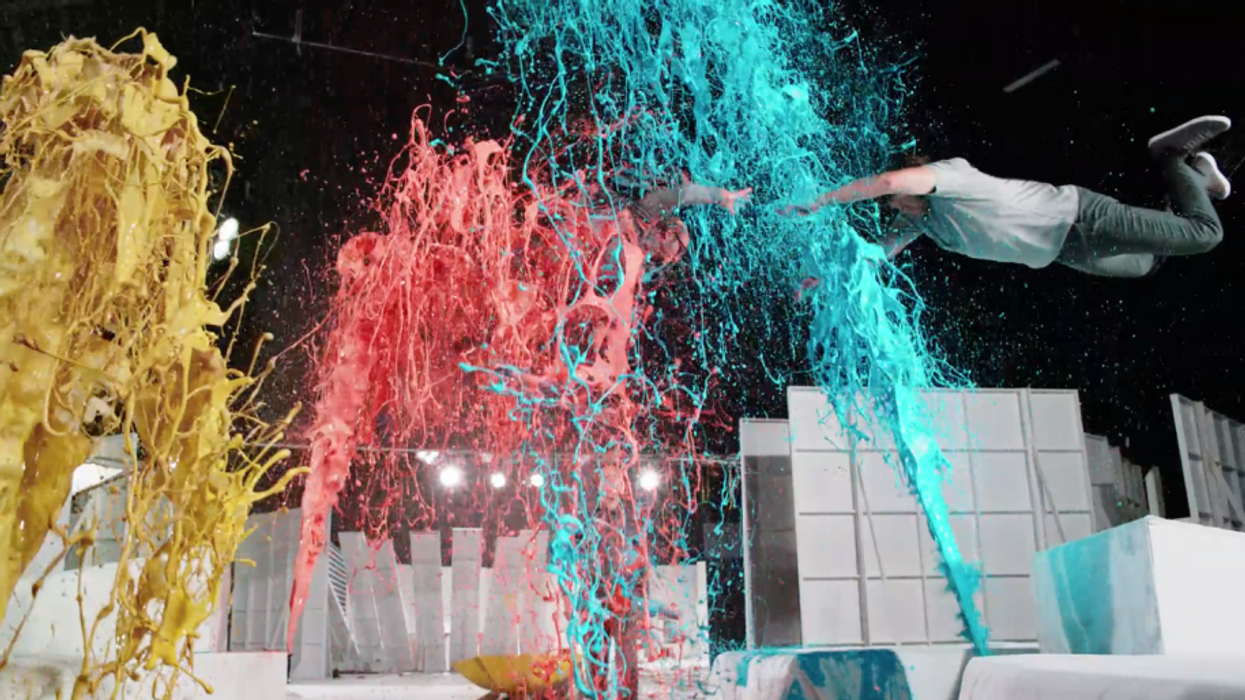How OK GO Stretched a 4.2-Second Shot into a 4-Minute Music Video
Known for their innovative music videos, the band one-ups themselves again with an insane new clip for 'The One Moment.'

With an ever-growing and increasingly impressive cannon of shorts to their name, we find ourselves wondering if it's high time for the members of OK GO to drop the mics and focus their efforts exclusively on cameras. In their last video, they took to parabolic flight on Russian airliner S7 Airlines, which we're pretty sure will be the only music video to be ever shot entirely in zero-gravity.
Their latest short for the song "The One Moment" takes a pretty simple premise we've seen before in music videos and literally blows it up. In past efforts, Spike Jonze and Matt Yoka have both used slow motion to create an illusion where other characters move slowly while the artist moves in real time. With this technique, you shoot things four times faster, so when you play it back in 24 frames, it displays in slow motion. You then multiply the speed of the film by four and multiply the speed of the song by four, so when you play it back, you return it to the actual speed at which the song plays.
"The One Moment" is a different beast entirely.
At the beginning of the video, we get a glimpse of the shot in real-time, which—from the beginning of the song until frontman and director Damian Kulash picks up the umbrella at the a cappella breakdown—unfolds over 4.2 seconds. It doesn't look like much but a series of rapid-fire explosions. Slowed down, however, we are treated to a stunning display of technical wizardry.
What's perhaps most impressive is how well they managed to sync up the song with the incredibly fast "events," of which there are exactly 318. So how did they do it?
"We used very precise digital triggers to set off several hundred events in extremely quick succession. The triggers were synchronized to high speed robotic arms which whipped the cameras along the path of the action," Kulash explains on the band's official website. "Though the routine was planned as a single event, currently no camera control systems exist which could move fast enough (or for many sections, change direction fast enough) to capture a movement this long and complex with a single camera, so the video you see connects seven camera movements."
Those events and explosions were plotted out prior to the big shot using simple mathematics. (Okay...maybe not so simple.)

This spreadsheet consists of dozens of connected worksheets feeding off of a master sheet 25 columns wide and nearly 400 rows long. In Kulash's words, it "calculates the exact timing of each event from a variety of data that related the events to one another and to the time scale in which they were being shot."
On top of this intricate web of events, many were shot at different speeds. Each section was shot at a constant rate, but between the events they toggled from one speed to another.
Kulash breaks it down further: "When the guitars explode, we are 200x slower than reality (6,000 frames per second), but Tim and Andy’s short bursts of lip sync (Tim twice and Andy once) are only 3x slower than real life (90 frames per second). The watermelons are around 150x, and the spray paint cans are a little over 60x."
For more information on how Kulash and OK GO pulled this whole thing off, check out their behind the scenes video below.
Source: OK GO














